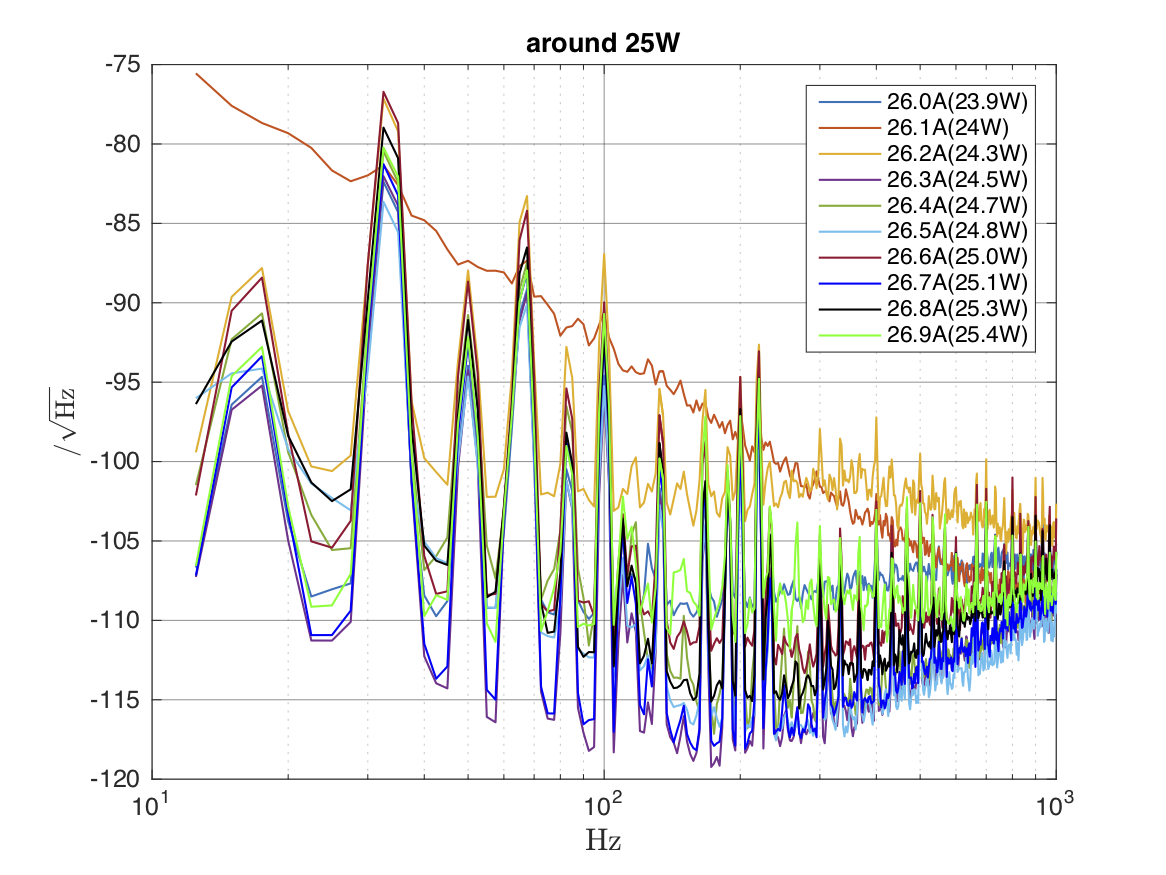[Tahara, Sakakibara, Nakano]
We measured the RIN of the bKAGRA phase 2 laser. This laser has the output power of 40 W.
Last week, the RIN was measured by Tahara-kun, and it seemed strange. We re-measured RINs with some output power.
=== Experimental setup ===
A layout of optics in this measurement is as shown in the following picture. The mirror located in the center has the reflectivity of ~99 %. Therefore, the power injected to a PD was several mWs. A noise eater of the NPRO was turned off.
The measurement procedure is as follows;
1. Change a current to the fiber amplifier to change the output power.
2. Rotate an ND filter to adjust the DC level of the output signal from the PD.
=== Measurement ===
We have done tens of the measurements with different powers. We grouped those data into three groups. The plots are shown. The vertical axis represents the RIN in all plots.
Fig.1. The RIN spectra in the whole power band from 2 W to 40 W
FIg.2. The RIN spectra in the power band around 25 W
Fig.3. The RIN spectra in the power band around 40 W
=== Discussion ===
We expected that the RIN increases according to the output power, i.e., the gain of the fiber amplifier. However, we saw the random noise structure during the sweeping the power from 2 W to 40 W as shown in Fig.1. Therefore, we varied the current to the fiber amplifier in 0.1 A increments around the current at which the laser power was around 25 W and 40 W. The RINs at each current are shown in Fig.2 and Fig.3.
As shown in Fig.2 and Fig.3, the different structure can be seen in the RIN spectra, even though the output power is close. Therefore, the RIN changes a lot when the current to the amplifier changes.
We also checked the time evolution of the RIN. We did see that the RIN spectra changed with the time. However, the change in the spectrum when the current was changed was much more drastically.
Furthermore, we checked the reproducibility. There were times when the same structure appeared at the same current, but not always.
While the RINs are quite different at the low frequencies below 1 kHz, that were almost same at the higher frequencies. Moreover, at the higher frequencies than 10 kHz, the RIN rapidly increased when the laser power got higher than 40 W.






